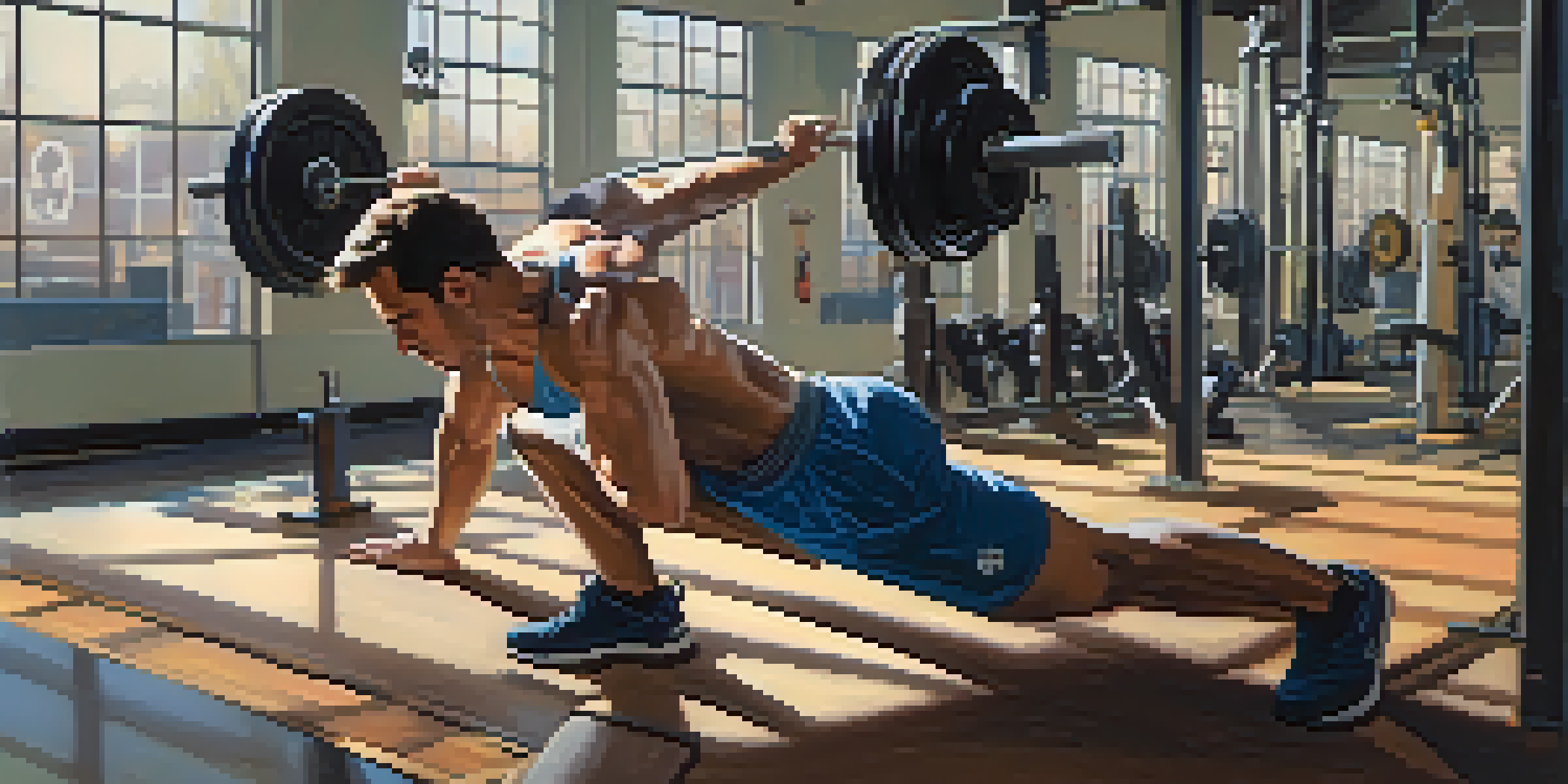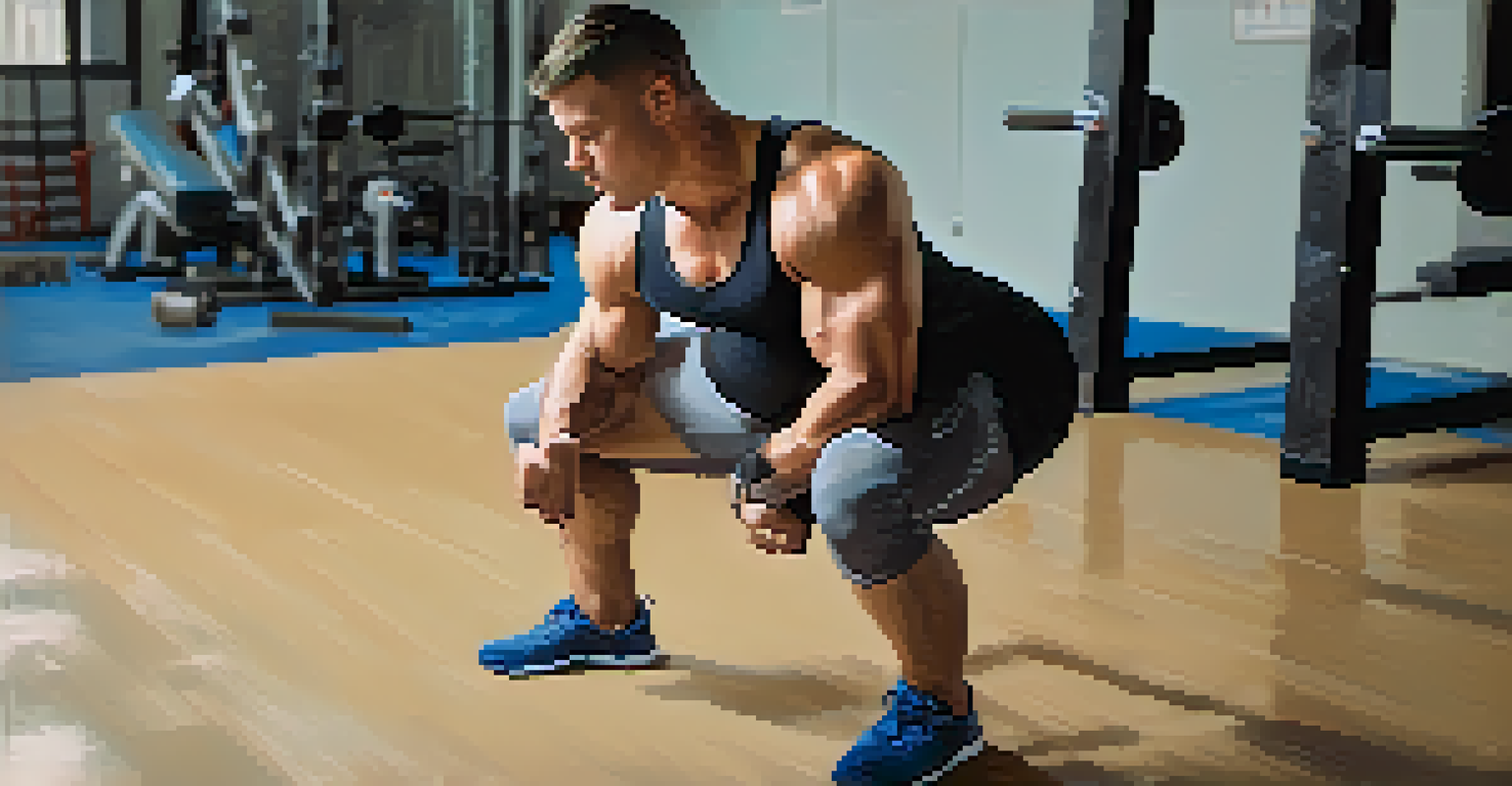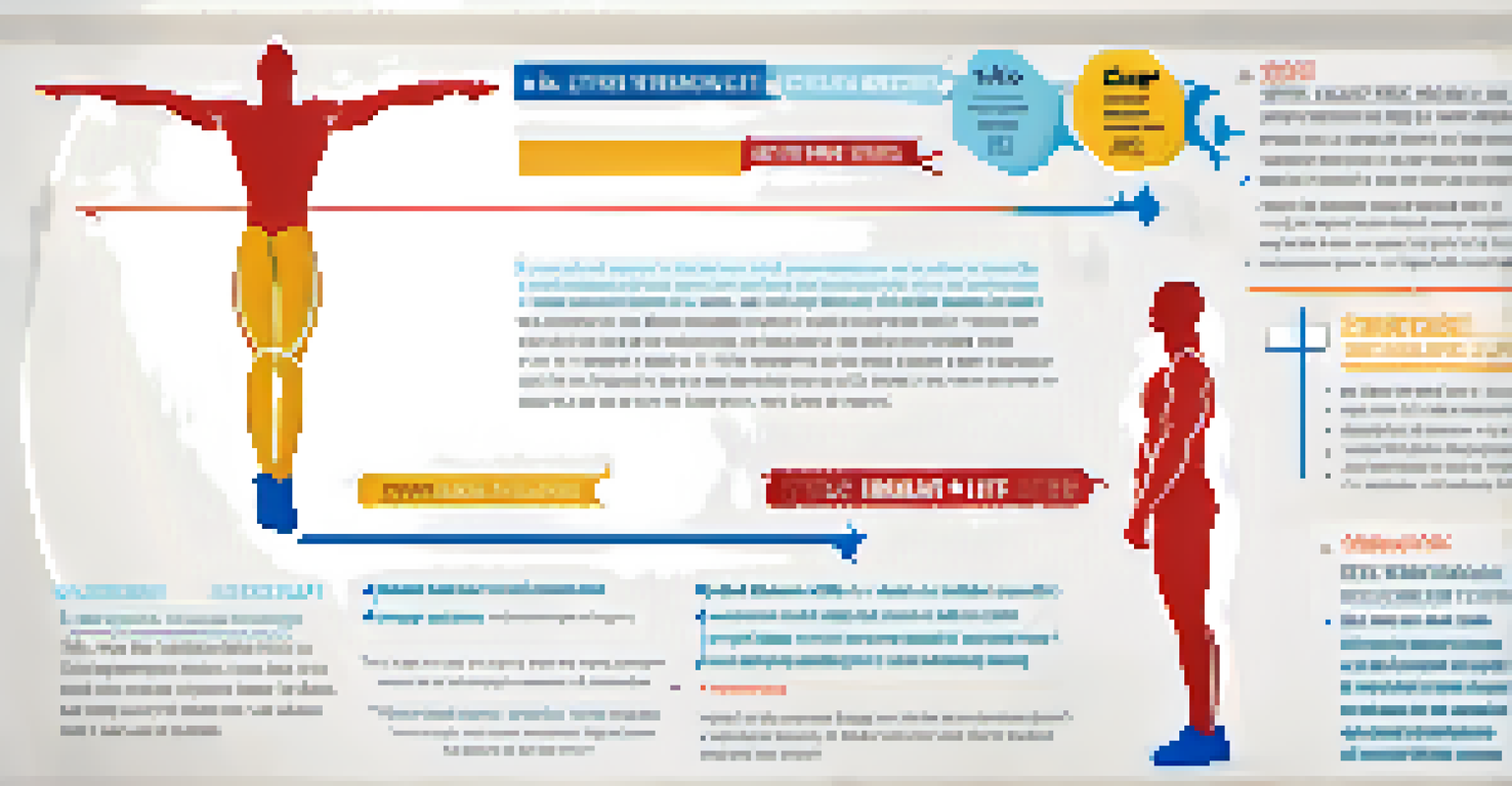Static vs Dynamic Stretching: Which is Best for Powerlifting?

Understanding the Basics of Stretching Techniques
Stretching is a crucial part of any workout routine, especially for powerlifters. It primarily falls into two categories: static and dynamic stretching. Static stretching involves holding a position to lengthen a muscle, while dynamic stretching incorporates movement to prepare the body for exercise.
The more you stretch, the more you can lift.
Both techniques serve different purposes, and understanding their roles can significantly impact your lifting performance. Static stretching is often used for flexibility and cooldown, while dynamic stretching is typically employed during warm-ups. Knowing when to use each can enhance your training outcomes.
In the world of powerlifting, where explosive strength is essential, the right type of stretching can mean the difference between a successful lift and an injury. So, let’s dive deeper into how these stretching techniques can benefit your powerlifting journey.
What is Static Stretching and Its Benefits
Static stretching involves elongating a muscle to its furthest point and holding that position for a duration, usually between 15 to 60 seconds. This technique is beneficial for improving flexibility and range of motion, which are essential for powerlifting success. For instance, holding a hamstring stretch can help increase the flexibility needed for a proper deadlift.

One of the major benefits of static stretching is that it can help reduce muscle tension and promote relaxation. After a heavy lifting session, incorporating static stretches can aid in recovery, allowing your muscles to relax and lengthen. This can be especially important for powerlifters who often push their limits.
Static vs Dynamic Stretching
Understanding the differences between static and dynamic stretching techniques is crucial for optimizing powerlifting performance.
However, while static stretching has its benefits, it’s best to use it after workouts or on rest days. Engaging in static stretching before lifting can temporarily weaken your muscles, which is something powerlifters want to avoid before a big lift.
The Role of Dynamic Stretching in Powerlifting
Dynamic stretching involves moving parts of your body through a full range of motion, often mimicking the movements you'll perform during your workout. This can include leg swings, arm circles, or walking lunges. Dynamic stretches are particularly effective for warming up the muscles needed for powerlifting.
Flexibility is the key to a successful lifting program.
The primary benefit of dynamic stretching is that it prepares your body for the physical demands of lifting. By increasing blood flow and muscle temperature, dynamic stretching enhances performance and reduces the risk of injury. For example, performing dynamic stretches before doing squats can help activate your leg muscles and joints.
Incorporating dynamic stretching into your warm-up routine is essential for powerlifters. It not only helps to improve your mobility but also primes your nervous system for the explosive movements required in powerlifting. This preparation can lead to better lifting performance and increased weights.
Comparing Effects of Static vs Dynamic Stretching
When it comes to preparing for powerlifting, the effects of static and dynamic stretching differ significantly. Static stretching can increase flexibility but may lead to temporary muscle weakness if done before lifting. On the other hand, dynamic stretching is designed to enhance movement and strength, making it more suitable before heavy lifts.
Research suggests that dynamic stretching can improve power and performance in strength training. For instance, studies show that athletes who engage in dynamic warm-ups before lifting tend to lift heavier weights compared to those who perform static stretches. This is particularly beneficial for powerlifters looking to maximize their performance.
Timing Matters in Stretching
Using dynamic stretching during warm-ups and static stretching post-workout can enhance flexibility and reduce injury risk.
Ultimately, the key is to use both types of stretching at the right times during your training. For powerlifters, dynamic stretching should be the go-to method during warm-ups, while static stretching can be effectively utilized during cooldowns.
Incorporating Static Stretching in Your Routine
Static stretching can play a vital role in your powerlifting routine, particularly after your workouts. It helps in gradually reducing muscle soreness and improving recovery time. By dedicating 10-15 minutes post-lift to static stretches, you can enhance your flexibility over time, which is beneficial for maintaining form and preventing injuries.
Moreover, static stretching can be integrated into your active recovery days. This allows you to work on flexibility without the pressure of lifting heavy weights. For example, incorporating stretches for your hips, hamstrings, and lower back can improve your overall lifting mechanics.
Remember to focus on the muscle groups most engaged during your lifts. By being intentional with your static stretching, you can target areas that tend to tighten up, ensuring that your body remains balanced and ready for the next session.
Best Dynamic Stretching Exercises for Powerlifters
When it comes to dynamic stretching, certain exercises stand out for powerlifters. Movements like leg swings, high knees, and dynamic lunges can effectively warm up the muscles used in squats, deadlifts, and bench presses. These exercises not only increase flexibility but also activate the muscles you'll rely on during your lifts.
Incorporating dynamic stretches into your warm-up routine can be as simple as performing a series of these movements for 5-10 minutes. For example, you might start with leg swings to loosen your hips, then progress to walking lunges to engage your lower body muscles effectively.
Key Exercises for Powerlifters
Incorporating specific dynamic exercises like leg swings and lunges into your routine can effectively prepare your body for heavy lifts.
By establishing a consistent dynamic stretching routine, you’ll find that your body feels more prepared and responsive when it’s time to lift. This can lead to improved performance and a reduced risk of injury, making it an essential component of your training regimen.
Conclusion: Finding Your Balance Between Both Techniques
In conclusion, both static and dynamic stretching have their places in a powerlifting routine. Dynamic stretching is essential for warming up before lifting, enhancing performance and reducing injury risk. Meanwhile, static stretching plays a crucial role in recovery and flexibility improvement after workouts.
A balanced approach that incorporates both techniques will allow powerlifters to maximize their training efficiency. As you become more aware of how your body responds to these methods, you can tailor your routine to suit your individual needs and preferences.

Ultimately, understanding the differences between static and dynamic stretching empowers you to make informed decisions in your training. By blending these techniques effectively, you’ll be on the path to achieving your powerlifting goals while keeping your body safe and strong.